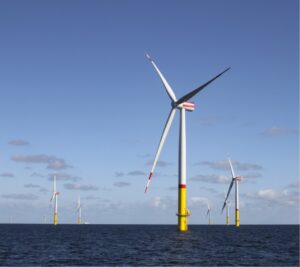The U.S. solar manufacturing landscape has undergone a remarkable transformation since the passage of the Inflation Reduction Act (IRA) in 2022. Through targeted domestic content incentives, the federal government has successfully ignited a manufacturing renaissance, boosting capacity nearly five-fold and creating thousands of jobs across the country.
Catalyzing Growth Through Strategic Incentives
The centerpiece of this revival is the IRA’s comprehensive package of tax incentives designed to rebuild America’s solar supply chain. The domestic content bonus tax credit offers project developers an additional 10% on top of the base 30% investment tax credit (ITC) when they use U.S.-made components. This creates demand-side pull for domestically manufactured solar products. According to U.S. Treasury Department data, more than $196 billion in clean power investments have been announced since the IRA’s passage, demonstrating the market’s strong response to these incentives.
Complementing this approach, the section 45X advanced manufacturing production tax credit directly supports manufacturers based on production volumes—providing 4 cents per watt for photovoltaic cells and $12 per square meter for photovoltaic wafers. This supply-side push has proven particularly effective for capital-intensive upstream components where global competition has historically been dominated by China.
Recent policy refinements further strengthen the incentive structure. In January 2025, updated Treasury guidance improved the domestic content bonus by providing default cost percentages and including alternative calculations for domestically produced wafers, addressing a critical supply chain gap.
Dramatic Manufacturing Capacity Expansion
The results have been striking. U.S. solar module manufacturing capacity has surged beyond 50 GW as of February 2025, positioning domestic factories to potentially meet nearly all U.S. demand at full capacity. Since the IRA’s enactment, more than $92 billion in clean energy manufacturing investments have been announced, including 27 new solar manufacturing facilities. For example, First Solar, America’s largest solar manufacturer, is expanding production to reach 10 GW of vertically integrated capacity by year end, while Qcells has established a manufacturing hub in Georgia and Silfab Solar recently raised $110 million through the sale of 45X credits to support its expansion into cell production in South Carolina.
Recent market data from Anza reveals important shifts in the solar supply landscape. In its “Second Quarter 2025 Domestic Content Insights” report, Anza said there are currently 17 suppliers offering U.S.-assembled modules, a number projected to increase further. More significantly, however, U.S.-made solar cell suppliers are expected to double from five in early 2025 to 10 by the first half of 2027, indicating a growing commitment to domestic production of this critical component.
The battery energy storage system (BESS) sector is experiencing even more dramatic growth in domestic manufacturing capacity. Domestic BESS cell suppliers are projected to grow from just one option currently to 10 by early 2027, while module suppliers could increase from three to 11 in the same period.
Meanwhile, pricing dynamics reveal interesting trends. Solar modules with U.S.-made cells saw a 4.3% price increase from December to March, while modules combining imported cells with U.S. assembly have actually seen prices flatten or slightly decline by 0.4%. This suggests buyers are increasingly prioritizing higher domestic content to maximize tax incentives.
However, new tariffs announced by the Trump administration have created significant market uncertainty. These include a 25% tariff on steel and aluminum, a 10% tariff on all imports, and reciprocal tariffs for select countries (with China facing tariffs of 145%). While the tariff landscape is still fluid and subject to change, Anza said, “These measures have created pricing uncertainty for manufacturers, developers, and buyers alike, delaying procurement decisions and prompting some to re-evaluate sourcing strategies.”
The Solar Energy Industries Association (SEIA) has advocated a strategic phased approach, prioritizing module assembly to build demand before expanding into upstream components like cells and wafers. This sequencing is proving effective—U.S. solar cell production has begun scaling with new factories like those mentioned above, though capacity remains limited at under 10 GW. Still, the U.S. is projected to produce 80% of its module demand by 2026, with annual installations expected to grow to 43 GW by 2029.
Persistent Challenges in the Supply Chain
Despite remarkable progress, significant challenges remain, particularly in upstream production. The U.S. continues to lag in producing silicon ingots, wafers, and polysilicon, with most cell and wafer production still reliant on imported materials. Only 10 GW of wafer/ingot capacity is planned, compared to 62 GW of module capacity.
Cost competitiveness poses another challenge. U.S. manufacturers face higher labor and building costs compared to Asian competitors. While tax credits help offset these differences, achieving economies of scale remains difficult, especially for upstream components.
Perhaps most concerning, though, is the growing presence of Chinese firms in the U.S. market. Companies benefiting from Chinese subsidies and low-cost energy are establishing U.S. factories that primarily assemble imported components. By 2026, Chinese-backed firms could control nearly half of U.S. module production, potentially undermining the IRA’s goal of reducing dependence on China.
Policy uncertainty also looms large. New tariffs and potential changes to IRA regulations are creating hesitation among investors. As Anza reports, some manufacturers “are accelerating U.S. production timelines to take advantage of domestic content incentives and avoid tariff exposure, while others have canceled previously announced plans due to financial or logistical constraints.” The report also notes that domestic inventories are contracting and prices are rising as available stocks are deployed to backfill orders impacted by new tariff measures.
Despite these challenges, the progress is undeniable. In just three years, U.S. solar manufacturing has undergone a renaissance that seemed impossible before the IRA. As the industry continues to mature, balancing rapid growth with strategic development of a complete domestic supply chain—supported by stable policies and streamlined permitting—will be essential to achieving true energy independence and security.
—Aaron Larson is POWER’s executive editor.











